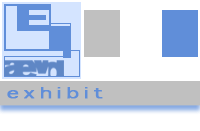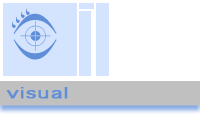Visto il successo ottenuto dal corso di Allestimento ed exhibit design, - culminato nell´esposizione "Progetti di comunicazione organizzata" - abbiamo pensato di raccogliere alcune considerazioni direttamente dal Prof. Guido Muneratto, docente del corso, ideatore e curatore dell´evento.
Come e da chi è partita l´idea di questo corso?
L´idea è nata da una proposta del Prof. Mauro Pascolini con cui ho successivamente discusso ed elaborato il progetto didattico complessivo.
Mi sembra importante sottolineare che senza la sua apertura e disponibilità a cogliere nuovi stimoli e nuove proposte la disciplina non avrebbe mai trovato accoglimento in questo Corso di Laurea.
A cosa mira il corso?
La comunicazione, è noto, non è solo verbale: questo progetto intendeva far sperimentare l'utilizzo di codici alternativi e integrare poi nella realizzazione pratica di elaborati finali competenze diverse acquisite nello studio delle altre discipline del Corso di Laurea in R.P..
Naturalmente, trattandosi dell'invenzione di un percorso non codificato, si è trattato anche di una sfida tesa a dimostrare la valenza formativa di abilità tecnico-operative specifiche di altri curricoli universitari all'interno di un Corso di Laurea che apparentemente si potrebbe presentare come solo teorico.
Come è strutturato?
Dovendomi rivolgere a studenti di formazione prevalentemente umanistica, senza una preparazione relativa alle tecniche di rappresentazione grafica e senza conoscenze nell'ambito dell'allestimento e del design, ho organizzato il corso in due parti: una prima tesa a fornire i presupposti culturali e metodologici e una seconda dedicata alla progettazione di allestimenti il più possibile efficaci sotto il profilo comunicativo.
E da qui la scelta del titolo dell´esposizione mutuato da una frase di Aldo Colonetti che è sufficientemente illustrativa del quadro teorico di riferimento. "L´allestimento di una mostra, o di uno stand, è un progetto di comunicazione organizzata: guida il lettore - visitatore lungo un percorso proponendo codici di interpretazione".
Che valore assume all´interno di tutto ciò la realizzazione della mostra?
La mostra è stata per così dire "una sfida nella sfida": portare gli studenti a realizzare modelli in scala che hanno richiesto un ulteriore avvicinamento a discipline nuove rispetto al loro curricolo accademico, e con la loro collaborazione progettare e allestire l´esposizione dei lavori, che si poneva, rispetto al progetto singolo di ciascuno di loro, come un metaprogetto.
Parlando di traguardi, come vede il risultato dell´esposizione svoltasi a metà settembre al Polo Universitario di Via Diaz?
Dai riscontri che ho potuto cogliere, a partire dall´entusiasmo di allieve e allievi, fino alla risposta del corpo accademico, che ha visto con favore l´apertura al nuovo e all´interesse dei vari visitatori, penso di poter concludere che il risultato finale del corso è ampiamente positivo e ha aperto orizzonti non prevedibili al momento della sua partenza.
Lo dimostra il fatto che il corso è stato non soltanto riconfermato per il corrente anno accademico ma anche fatto precedere da quel lavoro formativo preparatorio che si rende necessario per fornire i futuri professionisti delle relazioni pubbliche di una più solida base nel campo della comunicazione visiva.
Quest´anno accademico vedrà infatti l´inaugurazione di due nuovi corsi propedeutici all´allestimento e all´exhibit design e precisamente Tecniche della rappresentazione e Visual Design.
Vista l´importanza delle relazioni pubbliche e del valore mediatico dell´immagine si potrebbe pensare a un futuro interesse delle aziende proprio nel settore delle discipline da lei insegnate?
E´ un´idea a cui in effetti sto lavorando.
Nella misura in cui il corso riuscirà a rendere leggibile all´esterno la sua proposta formativa e culturale non sarebbe fuori luogo pensare a un rapporto di reciproco scambio con il mondo produttivo e commerciale in cui l´università funga da fucina di idee e progetti funzionali al perseguimento di quella qualità totale che le aziende devono perseguire, non solo per restare nel mercato ma anche per salvaguardare il loro ruolo sociale.
Inutile dire quanto in tutto ciò, il design dal Bauhaus in poi rappresenti quel quid che fa la differenza.
Ma questa è un´altra sfida....
for the Degree Program in Public Relations
Given the success of the course of Planning and Exhibit Design, -culminated in the exhibit “Projects of organized communication” – we decided to get some input directly from Prof. Guido Muneratto, instructor of the course, creator, and manager of the event.
How and from whom did you get the idea for this course?
The idea came from a proposal of Prof. Mauro Pascolini who I then discussed and planned the whole didactic project with.
I’d like to stress the fact that without his open mindedness and willingness to seize new incentives and proposals, the course would never have been accepted in this degree program.
What is the aim of the course?
Communication, as we know, is not only verbal: the intention of this project was to experiment the use of alternative codes and to integrate into the realistic creation of the final models, the different abilities acquired from the study of other courses in the degree program in P.R..
Naturally, dealing with the invention of an uncoded course, it was also a challenge aimed at showing the educational worth of specific technical-operative abilities from other university curriculum put into a degree program that would seemingly only be able to offer them as theoretical ideas.
How is it structured?
Having to deal with students from a prevalently humanistic educational background, without preparation related to techniques of graphic presentation and without knowledge of the field of planning and design, I organized the course in two parts: the first provided the cultural and methodological prerequisites and the second was dedicated to the planning of specific designs which were the most effective on a communicative level.
And from there, the choice of the title of the exhibit, borrowed from a statement made by Aldo Colonetti which is sufficiently illustrative of the theoretical frame of reference of the course. “ The planning of an exhibit, or of a stand, is a project of organized communication: it guides the reader-visitor along a path proposing codes of interpretation.”
What value does the achievement of the exhibit have in respect to the course?
The exhibit was, let’s say, “a challenge within the challenge”: getting the students to complete scale models which require a further understanding of new subjects in respect to their academic field, and with their collaboration, plan and design the exhibit of their work, which became, in respect to each of their individual projects, a goal/project.
Speaking of goals, how do you view the result of the exhibition that took place in mid September at the University Department in Diaz Street in Gorizia?
From the comments I received, from the enthusiasm of the students, to the response from the academic body, which favourably viewed the openess to something new and the interest of the various visitors, I think I can conclude that the final result of the course is extremely positive and it opened new horizons which were not predictable when it started.
This is proven by the fact that the course was not only confirmed for the present academic year, but also made as a requirement for the preparatory coursework necessary for providing future professionals in public relations with a solid base in the field of visual communication. This coming year, in fact, will inaugurate two new introductory courses in planning and exhibit design, and they are Techniques of Representation and Visual Design.
Given the importance of public relations and the value of images in the media, can we think of a future interest on the part of companies in the sector of courses that you teach?
In fact, that’s an idea I’m working on.
To the extent in which the course will be able to make its education and cultural proposal readable to the outside world, it would not be out of place to think of a relationship of reciprocal exchange with the productive and commercial world where the university would function as a source of ideas and projects working towards that total quality that companies must strive for, not only in order to remain in the market, but also to protect their social role.
It is unnecessary to say how much in all this, the design from Bauhaus on represents that certain something that makes the difference.
But that is another challenge…







